Culture
Smuggled Photos from North Korea

Not many people from the West can honestly say they have a firsthand knowledge of what North Korea looks like today. Most of the knowledge the West did have came from the Korean War, which is severely outdated. However, a few modern visitors have made it into the country and back out again, not only with their memories but with photographs as well. The highly insulated nation has been aggressively anti-open towards any source that shows the accurate picture of life inside North Korea, so almost all photos aside from the government itself have been smuggled out. Here is a set of images from Eric Lafforgue was able to get out because of the advance of digital storage and small memory cards versus film cannisters.
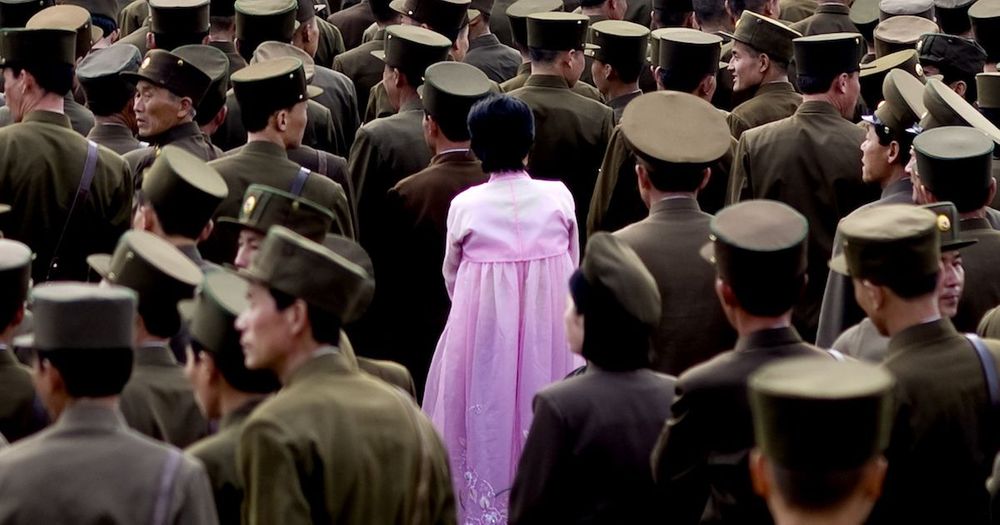
The Woman Among the Soldiers
Much of Eric’s tour around North Korea was what the government wanted him to see, one of those things being how strong their military should be seen as. So, no surprise, he had a lot of photos of soldiers. In this case, however, he was also able to capture a sole North Korean lady in traditional dress among a sea of uniforms.

Computer Access
The computer age has made it to North Korea, which has been well-documented by the attack on Sony. However, from the government’s perspective, computers are a tool of the people’s ability to be education and effective. So, there were lots of photos showing technology advancement. Unfortunately, the computers were only functional when there was power. Blackouts are common in North Korea.
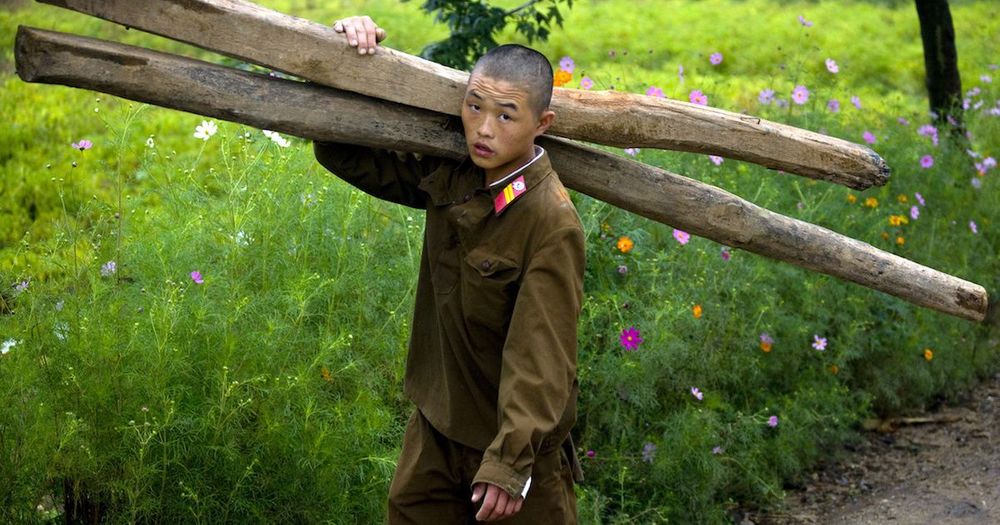
Military Work Means Farm Work
Farming is essential for the country. North Korea has had multiple famines, so it’s food production is critical for maintain the country as a whole. The military is no exception, often being used as manpower to assist farms and keep them functional. Eric’s photo of this soldier showed policy in action.
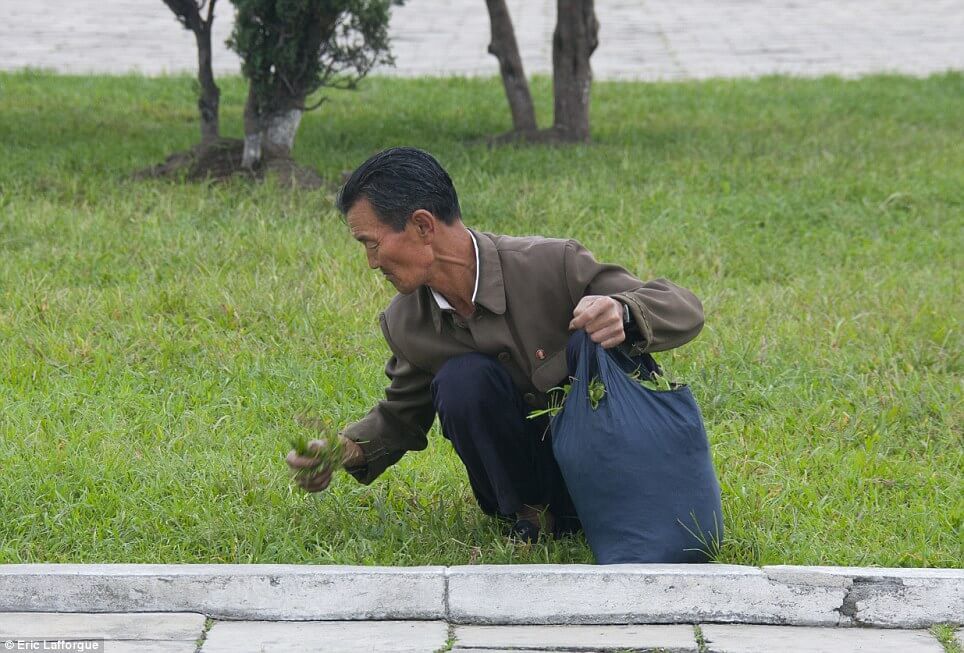
Eating the Grass
Hunger is commonplace for the average person in North Korea, which makes it no surprise why so many lean towards finding a role in some kind of apparatus – at least they get a guaranteed meal every day. Unfortunately, what Eric saw was a lot of other people starving, even to the point of harvesting grass to eat it and make it to another day. His government minders made it clear no one should take photos of the practice.
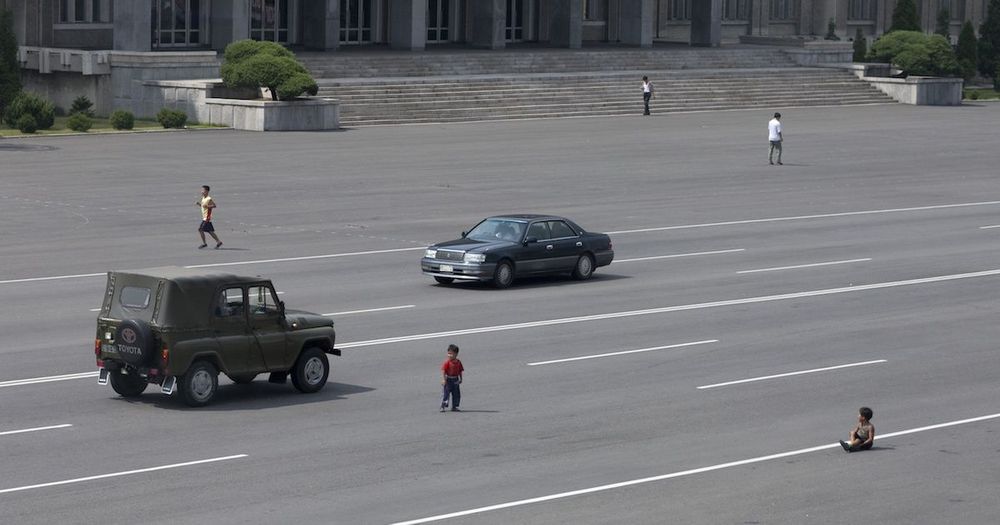
Kids Playing
Children are extremely controlled and disciplined in the country, so it was an odd experience to find one just being a normal kid and standing out, as in this case in the middle of the road. Curiosity and adventure are normal for children as they explore the world, but the behavior is practically banned in-country.
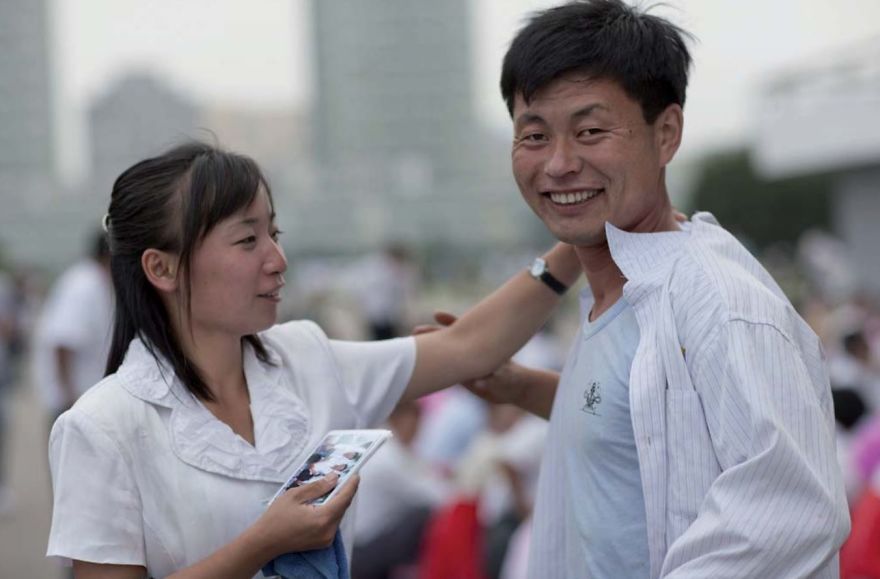
Appearance Matters
The government has very clear rules about how everything is displayed in the country, even how people are dressed when photographed. Eric was able to catch this interaction where a man to be photographed is essentially being straightened out to look more presentable, i.e. get his shirt unruffled.

Cars are a Rarity
Most people in North Korea only see a vehicle when it involves the military. However, in the main cities a few more are seen regularly as government officials use them in and out of locations. Cars are starting to be a bit more frequent in terms of non-military use, but they still frighten folks in the rural areas.

Double Duty Subway
The subway system for Pyongyang was intentionally designed for more than transportation. It also functions as a ready-made bomb shelter for a significant number of inhabitants of the capital. Photographs showing the tunnels are forbidden and Eric was immediately told to delete this image.
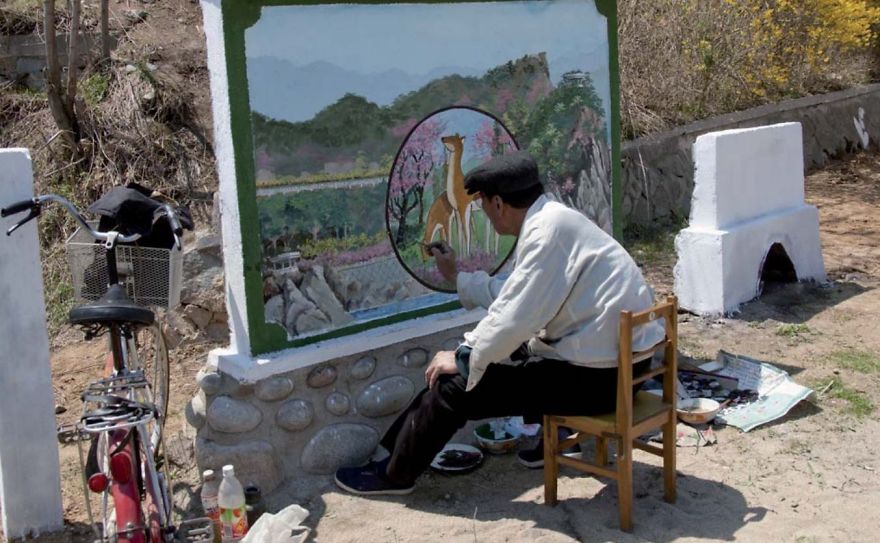
Art has to be Finished
The government has a real problem showing anything unfinished and unapproved, even in the case of artwork being developed or created. That was the case with this painter who was photographed during his work. The government minders made it clear the picture was unfinished and off-limits.

Signs of Famine Barred
Clearly the North Korean government wants any image of its people to show them as prosperous and happy and most importantly, well-fed. That was not the case with this fellow who clearly evokes an image of malnourishment.
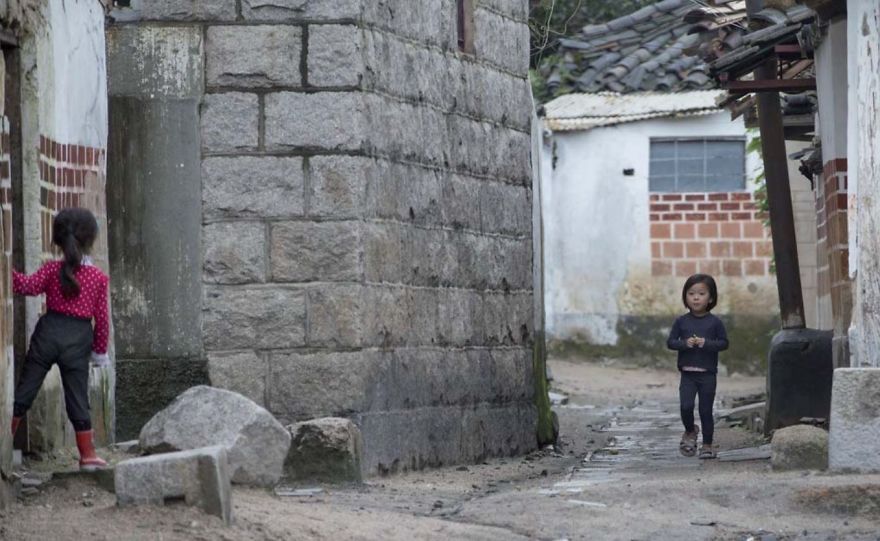
DMZ Hotels
Any hotels near the DMZ are very restricted to the point that the guests are not allowed to walk outside on their free time. However, most of the accommodations are actually old houses in the area. Any guest attempting to go outside will likely block a guest asking why they need to go outside. The common phrase is that it is the same as inside the hotel.
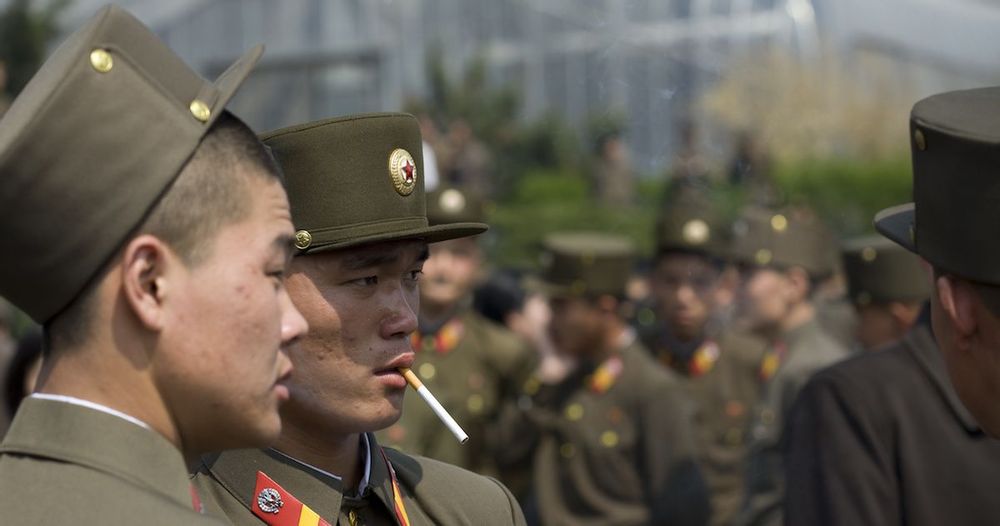
No Soldiers Relaxing
Soldiers in North Korea are always seen at attention. So, actually capturing an image of soldiers just being human beings was a big no-no. Eric managed to grab this image of a couple uniforms just having a cigarette and conversation. It’s a big risk as the country has a national law forbidding photographs of people’s faces when doing things that are considered embarrassing to the government.

Creative Boating
One fellow decided to a tire was good flotation device to get from one place to another on water. The image looks typical of a countryside, but what it really might be indicative of is the fact that even natural resources like wood are controlled and extremely rare for use other than the government.
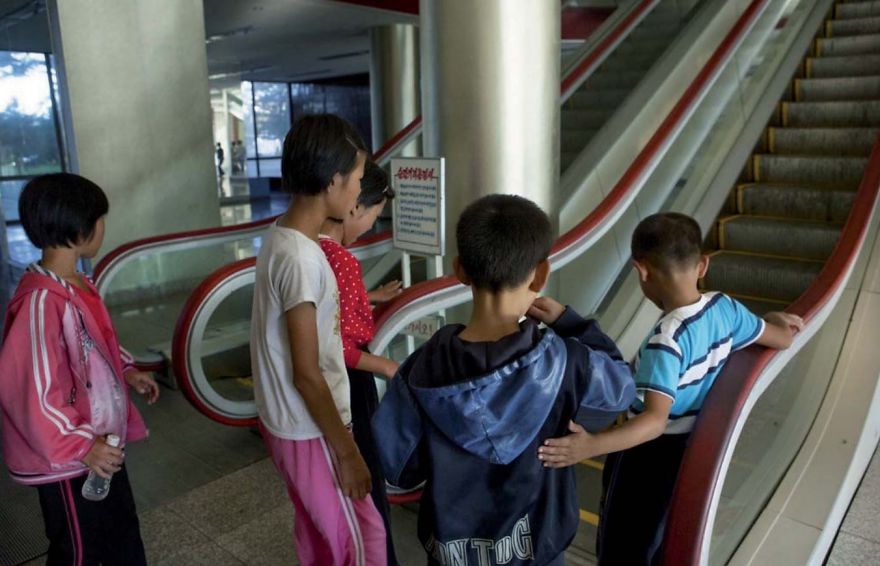
Kid Camps
Wonsan has a Pionners Camp designed to help education children from all over the country. However, for many of the first time attendees, the facility itself is scary and nothing they’ve ever seen in the countryside. That was the case for these kids staring at an escalator.

The Challenge of Group Photos
Again, Eric was told with certain clarity, none of his photographs were allowed have military personnel in them. That’s fine when the soldiers are stationed at military functions, but it becomes a real problem when 99 percent of the crowd at a zoo or amusement park is military personnel. That was the case in this event at the Delphinium located in Pyongyang.

Lines, Lines Everywhere
A common practice in North Korea involves standing in line. Just about everything involves a line and mass queues are commonplace, even for taking the local bus as seen in this image of the main plaza connection point.

People Must Be Shown Respectfully
The idea that an official is ever portrayed not doing their job correct is never allowed, so photography of that happening is a huge problem for the photographer. Eric managed to catch an image of this official snoozing, which would never have been allowed past the normal censors had they seen in it in his allowed images.

Normal Life is Rough
Visiting groups are shown the best of homes to prove that North Korea is just fine for the average person, even in the country. However, the details give away what’s really going on, as in the case of this bathroom that uses a bath tub and installed water pump for the general water supply for everything.
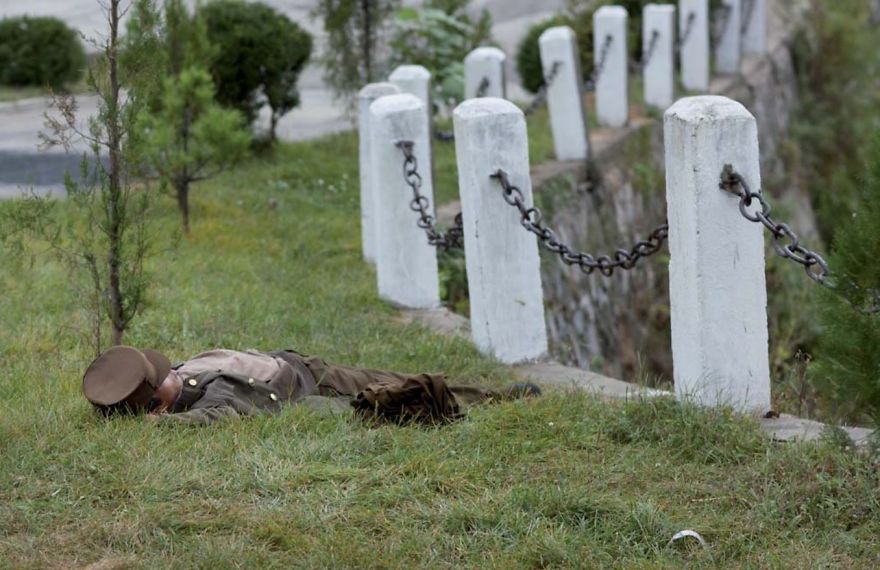
Sleeping Off Duty
Military personnel are expected to wear their uniform all the time, even when off-duty. So, it’s not a surprise to see a fellow catching a nap when he can, as was the case with this one in a field.

Poverty
Photos of the poor in North Korea are also forbidden, and it doesn’t matter if one argues that poverty exists in every country, even in the West. Yet, just about everyone in the countryside lives in poverty unless they are military or running a collective farm. These two kids carrying buckets aren’t showing hard disparity, but it’s not a luxury life either.
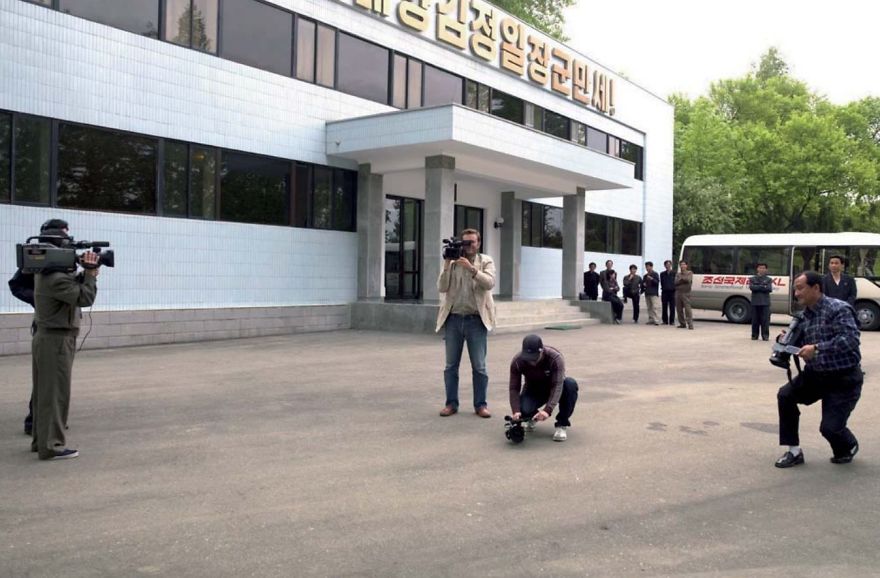
Tremendous Monitoring
Any visiting groups are monitored heavily in North Korea, and one has to wonder how the country sustains itself with so many personnel dedicated to watching others instead of producing anything themselves. It’s very common for visiting media to be followed and watched by two, three even four groups of monitors, so it’s amazing Eric was able to smuggle out any images at all.
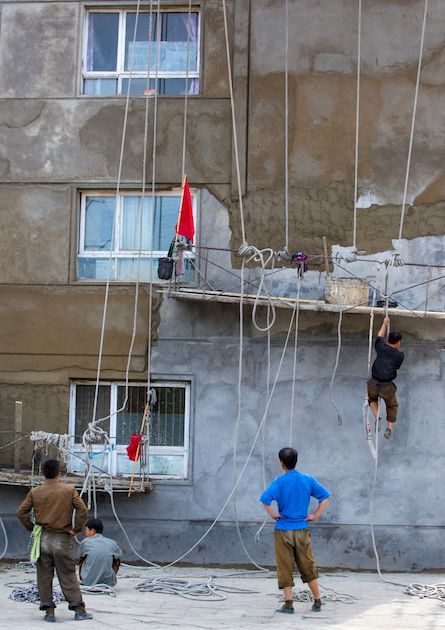
There’s No OSHA in North Korea
Worker safety is how well the workers protect themselves. Occupational safety standards as known in the West don’t seem to exist in the country. That was evident in this image of wall repair crews that Eric took in a key moment.
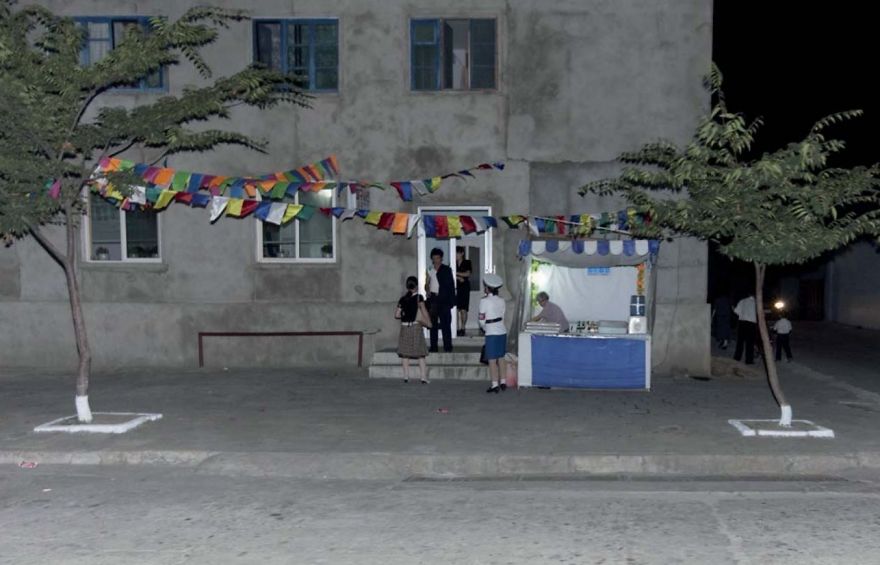
Flash Photography Banned
If you’re the type who likes to take night photos with a flash, good luck. They are often not allowed, and minders will tell you it’s because the flash might scare the locals.

They Have Grocery Stores
The market stores in Pyongyang carry many of the recognizable products people are used to in the West. The issue is who actually shops in these markets. While you can easily find Evian water, for example, the customers allowed are only the country’s elite.
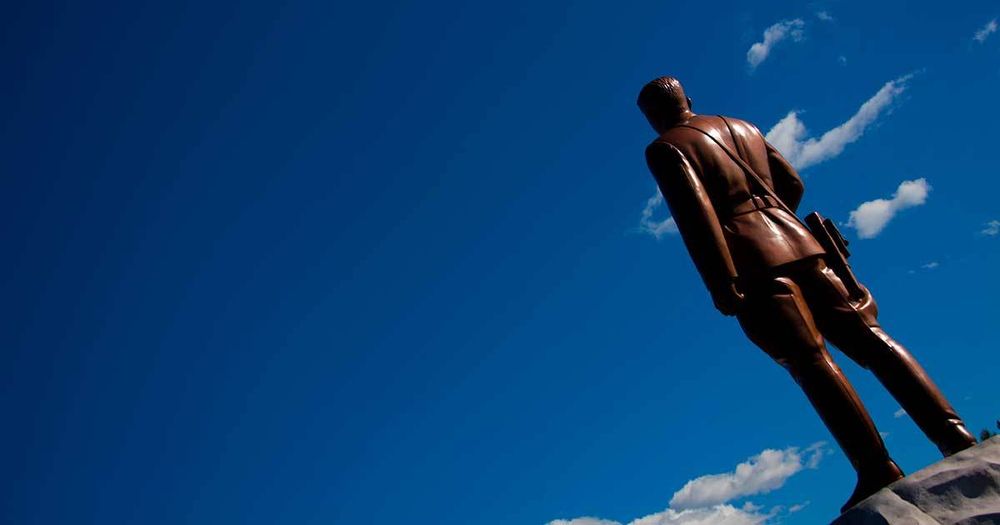
Tip for Tourists
Never take a photograph of the country’s leader from the back, especially statues. Rear images are not allowed and will get you into a lot of trouble. They are considered culturally rude to produce.
Culture
South Africa Plans to Stop Lion Breeding for Hunts

South Africa announced its plan on Wednesday to gradually stop the breeding of lions for hunting. This decision aims to end the business that has been criticized for a long time. This business involves raising big cats so that rich hunters, who pay a lot of money, can hunt them. These hunters often take parts of the lions, like their heads or skins, as trophies to keep.
The South African government had already shown its desire to stop lion breeding for hunts in 2021. A special group has been working on this matter for two years. Environment Minister Barabara Creecy, during a news conference in Cape Town, said that this group suggested shutting down the industry. This includes stopping the breeding of lions, keeping them captive, or selling anything obtained from captive lions.
Lion breeders have two years to stop their activities voluntarily and find a different business to do before this new rule is enforced. Even though this plan has met with resistance from the industry, which makes a lot of money, the government approved it recently. However, it’s not yet an official law.
This step is taken as more people, especially in Western countries, are against trophy hunting. Efforts to stop trophy imports are gaining support in the United States, Australia, and some European countries. Kamalasen Chetty, who leads the special group, mentioned that the lion breeding industry is big and complicated. It has a long history but doesn’t fit with the latest international trends or changes in local conservation policies.
Animal rights organizations estimate that there are between 8,000 and 12,000 lions on around 350 farms in South Africa. These groups often criticize the way these animals are kept. In contrast, there are only about 3,500 wild lions, as reported by the Endangered Wildlife Trust, an organization based in South Africa.
Culture
Research Finds That Birds Can Be Polite
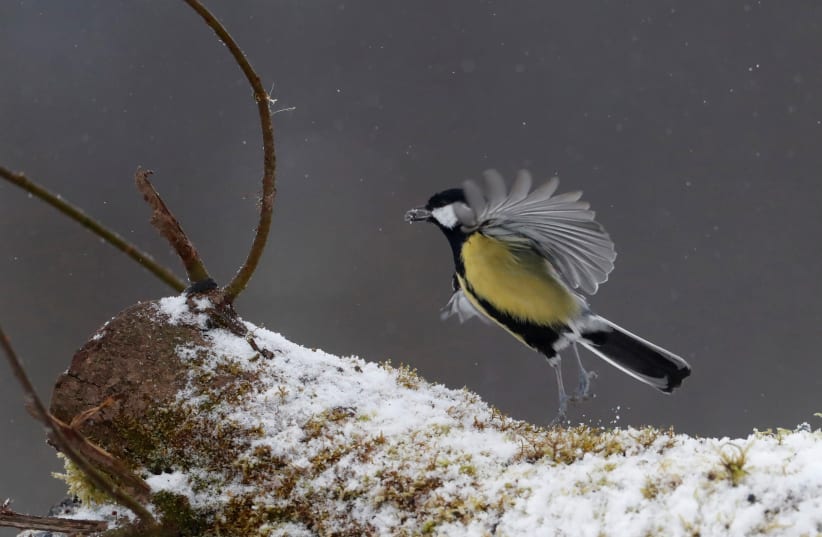
Did you know that birds can be polite, just like humans? Researchers have found that the Japanese tit, a small bird found in Japan, has a unique way of showing politeness through its wing gestures. This fascinating discovery gives us a glimpse into the complex world of bird communication.
At the University of Tokyo, Professor Toshitaka Suzuki and his team studied these birds and made some amazing discoveries. They noticed that when a pair of Japanese tits arrives at their nest box with food, they don’t rush in. Instead, they wait on nearby perches. What happens next is intriguing: one bird flutters its wings toward the other, as if to say, “After you.” This gesture is like holding the door open for someone, showing respect and care.
The Japanese tit, scientifically known as Parus minor, is not just any bird; it’s known for its intelligence and complex behaviors. Professor Suzuki, who has been studying these birds for over 17 years, found that they use specific calls and even combine these calls into phrases, much like how we form sentences. This shows how advanced their communication skills are.
In their study, published in the journal Current Biology, the researchers observed that these wing-fluttering gestures happened mainly between mates and were a clear sign for one to enter the nest before the other. Interestingly, it was usually the female that made the gesture, inviting the male to go first.
This behavior has led scientists to think about how gestures evolved in the animal kingdom. Just like humans developed gestures by using their hands more when they started walking on two legs, birds might have developed gestures by using their wings while perching.
The research on the Japanese tit is part of a larger effort to understand how animals communicate, not just with sounds but also with physical movements. This could help us learn more about how language and communication developed, even in humans.
So, the next time you see birds, think about the complex and polite ways they might be communicating right in front of your eyes!
Culture
Volunteers and Camels Team Up to Restore Mojave Desert’s Joshua Trees
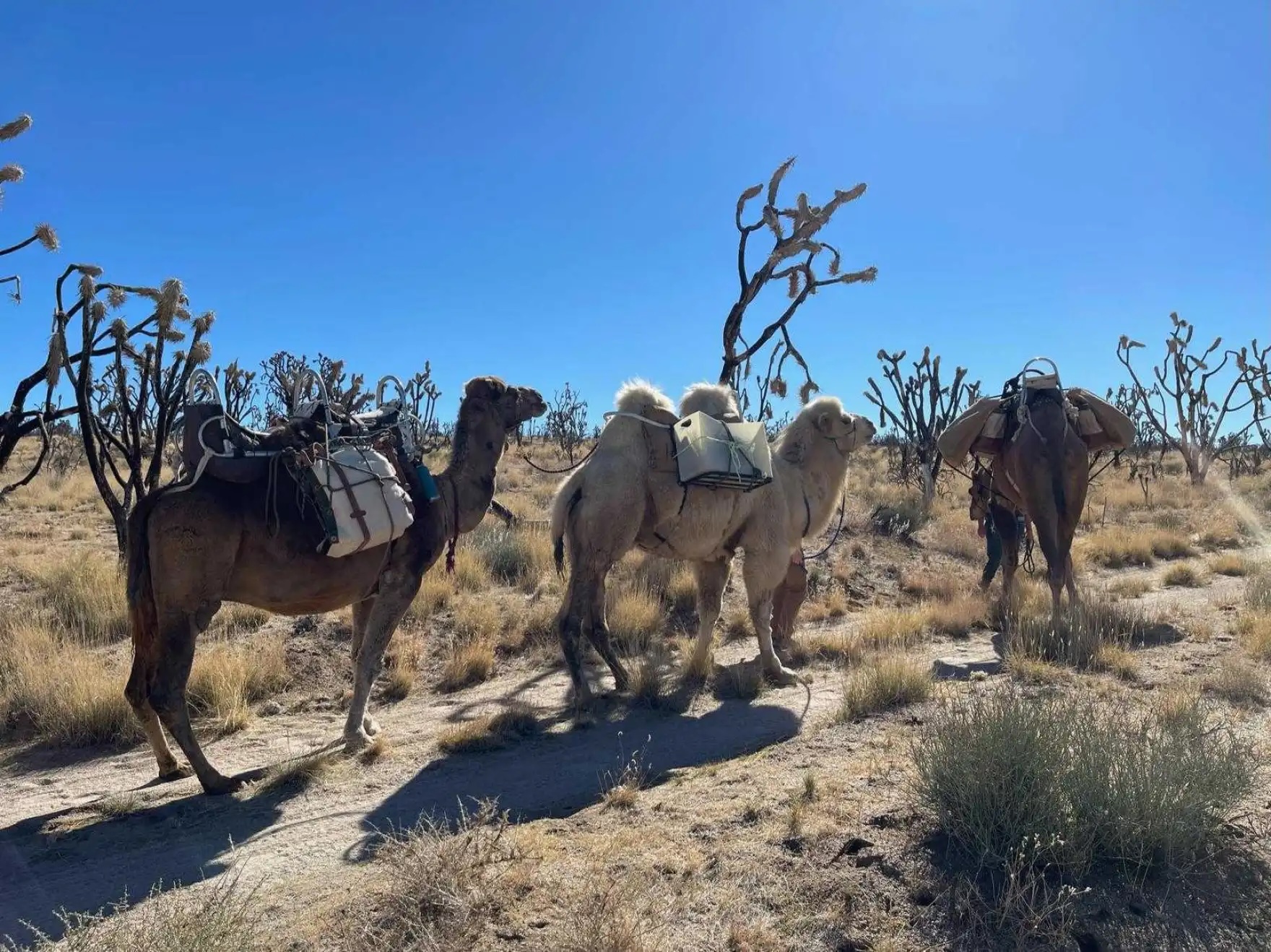
The Mojave Desert, with its vast, arid landscape, is home to the iconic Joshua tree. These unique trees have a fascinating history, once coexisting with Giant Ground Sloths during the ice age and now relying on rodents for their slow dispersal. However, a devastating wildfire in 2020 burned a significant portion of the desert, including many Joshua trees, posing a challenge for their restoration.
“Joshua trees seeds don’t spread very quickly,” explained Debra Hughson, deputy superintendent at the Mojave National Preserve. “They don’t move very fast or they don’t move very far with just small mammals around.” Despite these challenges, scientists were determined to help the Joshua trees recover, especially in areas like Cima Dome, where their survival could be crucial in the face of climate change.
To accelerate the recovery process, Hughson and her colleagues decided to plant Joshua tree seedlings in a more spaced-out pattern in the Dome’s burn scar. This approach aimed to distribute seed sources and promote the recovery of the entire area. However, the rugged terrain made it difficult for volunteers to reach the designated planting spots, requiring hours of hiking.
To address this challenge, the team came up with a unique solution — using camels to transport the seedlings and water into the wilderness. “Prehistoric camels were in the Mojave Desert, and the camels came through in 1857,” explained one of the volunteers, highlighting the historical connection between camels and the region. The camels, led by Herbie, Sully, and Chico, have been instrumental in carrying out these restoration efforts since 2021.
“Our goal is to protect natural systems and natural ecosystems — all the plants, all the animals, but then some animals and some plants wind up being just a little bit more ‘charismatic’ than other ones,” said Hughson, emphasizing the importance of charismatic species like the Joshua tree in garnering support for conservation efforts.
Through the dedication of volunteers and the help of these remarkable camels, the Mojave Desert’s Joshua trees are slowly making a comeback, offering hope for their future in this challenging environment.
Culture
Apes’ Playful Teasing Behavior Mirrors Human Playfulness
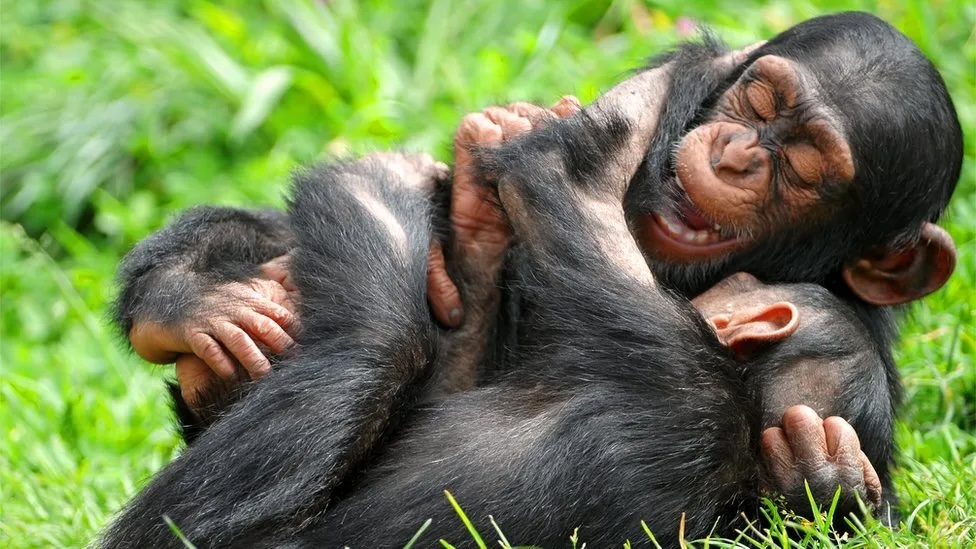
Did you know that apes like to tease and prank each other, just like humans do? Researchers have found that chimpanzees, bonobos, gorillas, and orangutans engage in playful teasing behavior, such as poking, tickling, body slamming, hair pulling, and waving objects in front of faces. This behavior is usually one-sided, with one ape trying to get a reaction from another.
In a study published in the journal Proceedings of the Royal Society B Biological Sciences, researchers analyzed 75 hours of video footage of apes at the San Diego Zoo in California and the Leipzig Zoo in Germany. The apes studied were between the ages of 3 and 5. The researchers observed 284 instances of teasing behavior, with 129 meeting the criteria for playful and provocative behavior. They identified 18 different teasing behaviors.
Professor Erica Cartmill of UCLA, who led the study, said that teasers often waved or swung body parts or objects in front of the other ape, hit or poked them, stared closely at their face, disrupted their movements, pulled their hair, or performed other behaviors that were hard to ignore.
The researchers believe that playful teasing and joking may have evolved in human ancestors around 13 million years ago. This behavior has implications for the study of emotion, humor, and pretense, and the researchers hope that their study will inspire further research into playful teasing in other species to better understand its evolution.
Culture
Ancient Rainforest Rising: How 100,000 Trees Will Breathe Life Back into Devon

Imagine stepping into a world shrouded in mist, where towering trees, draped in green moss, reach towards the sun. Sunlight filters through the dense canopy, casting dappled patterns on the forest floor, alive with ferns, wildflowers, and scurrying creatures. This isn’t a scene from a fantasy novel; it’s the magic of a temperate rainforest, and soon, a piece of this ancient wonder will be reborn in Devon, UK.
Temperate rainforests aren’t like their tropical cousins. Found along the west coasts of continents in cooler climates, they’re like emerald jewels nestled between the ocean and rolling hills. They’re a treasure trove of biodiversity, bursting with unique plants and animals that have adapted to life in a world of constant drizzle and mild temperatures.
In the UK, these rainforests have a character all their own. Picture gnarled oaks and majestic ash trees, their branches intertwined like leafy arms. Underneath, carpets of mosses and ferns cushion the damp earth, while sunlight dances on the shimmering leaves of holly, hazel, and rowan. The air is alive with the buzz of insects, the flitting wings of butterflies, and the calls of birds like the evocative song thrush and the shy woodcock.
But these precious ecosystems are under threat. Centuries of land use have shrunk their footprints, leaving only scattered fragments of their former glory. Now, in a project to reclaim this lost magic, the National Trust is embarking on a grand mission: planting 100,000 trees across Devon.
From the rolling hills of Exmoor to the windswept cliffs of Woolacombe and Hartland, these saplings will breathe life back into the land. They’ll create new pockets of rainforest, stitch together existing fragments, and weave a vibrant tapestry of green across the landscape.
And it’s not just about beauty. These trees are nature’s silent heroes. They act as carbon sinks, trapping the harmful gas carbon dioxide in their leaves and wood, helping to combat climate change. They filter air and water, creating a haven for wildlife and providing a natural shield against soil erosion.
For the people of Devon, this project is a chance to reconnect with their natural heritage. It’s about creating spaces for quiet contemplation, for family adventures, and for rediscovering the magic of the ancient rainforests.
So, the next time you find yourself in Devon, keep your eyes peeled for a glimpse of this green revival. As the saplings rise towards the sun, they whisper a promise of a richer, wilder future, where nature reclaims its throne and the spirit of the ancient rainforest once again fills the air.
This is just the beginning. With more planting planned in the coming years, the future of Devon’s rainforests is looking brighter than ever. Let’s hope that this story inspires other communities to follow suit and work towards restoring and protecting these irreplaceable treasures of our planet.
-

 OMG6 years ago
OMG6 years agoA Couple Gave Birth to the Most Beautiful Twins Ever
-

 OMG6 years ago
OMG6 years ago20 Rare Historical Photos
-

 OMG6 years ago
OMG6 years agoHilarious Airport Photos
-

 Cute5 years ago
Cute5 years agoMom Refuses to Let Daughter Eat Sugar and Years Later This is What She Grows Into
-

 OMG5 years ago
OMG5 years agoTop Secret Air Force One Facts That You Never Knew
-
OMG5 years ago
The Funniest Yearbook Photos Of All Time
-

 OMG6 years ago
OMG6 years agoRetired Mathematician Restores Log Cabin
-

 OMG4 years ago
OMG4 years agoWhat Happened When This ‘Duck Dynasty’ Legend Chopped Off His Beard?